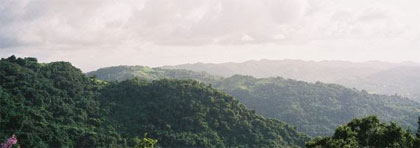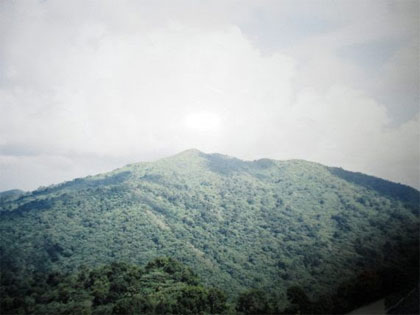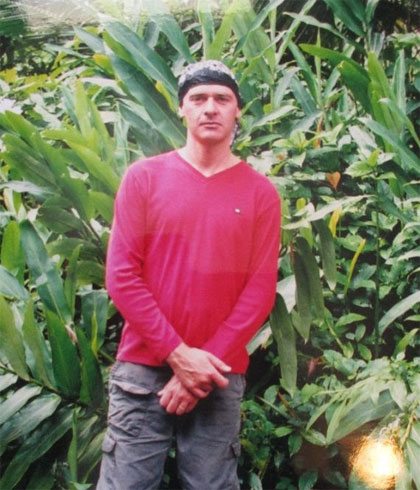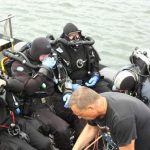
Puerto Rico’s Chupacabras: When Were They First Seen? You Might be Surprised…
Nick Redfern December 3, 2021
For most researchers of the Chupacabra phenomenon, the whole thing began on August 1995. That was when a woman named Madelyne Tolentino – who lived in Canovanas, which is close to the northeast coast of Puerto Rico – changed everything. Tolentino’s description of the creature she encountered, close to her mother’s home, was disturbing, to say the very least. It was a description eagerly embraced by the island’s media and by investigators of monsters and mysteries. Tolentino told journalists and researchers that the creature was around three feet in height, bipedal, ran in a weird, hopping fashion, had large black eyes, bony fingers on each hand, overly long arms and legs, and a kind of feathery line running down its back. Or, it appeared to Tolentino to be a feathery line: a young boy employed by Tolentino’s husband claimed that he saw the beast up close and personal and maintained that the feathers were, in reality, sharp spines. The boy also said that the creature possessed a mouthful of vicious-looking fangs. Not only did the people know of the chupacabra and its predations, they also now knew what it looked like: something straight out of their worst nightmares. As the years progressed, so did the attacks. There is, however, something else: there is evidence that the creatures were roaming around Puerto Rico decades before. Let’s have a look at the data.
 (Nick Redfern) Puerto Rico: The lair of the Chupacabra
(Nick Redfern) Puerto Rico: The lair of the Chupacabra
In September 1959, a groundbreaking paper was published by the acclaimed scientific journal, Nature. Its title was: Searching for Interstellar Communications. The authors were two physicists, Phillip Morrison and Giuseppe Conconi, both of Cornell University. In essence, the paper was a study of how microwaves might be successfully used to seek out alien intelligences, in other parts of the Universe. It had a great effect on one Frank Drake – a man who, after having carefully read the report, embarked on a life and career to search the Universe for aliens. Drake began his work at the West Virginia-based Green Bank National Radio Astronomy Observatory. He was, without doubt, the star of the Search for Extraterrestrial Intelligence (SETI) conference that was held at the observatory in October 1961. Drake ultimately gravitated to Puerto Rico, home to the Arecibo Radio Telescope, of which he became the director.
 (Nick Redfern) Puerto Rico’s amazing El Yunque Rainforest
(Nick Redfern) Puerto Rico’s amazing El Yunque Rainforest
Midway through the 1960s, something decidedly strange happened at the telescope, something that may well have a direct bearing upon the chupacabra phenomenon. A guard reported, one day, seeing a curious character roaming around the edge of the installation. What made the man – if a man it was – so curious was his attire: a long, black cloak. The guard, apparently, had his own ideas on what he was seeing: one of the undead; a vampire. A report on the affair was prepared for Drake’s attention. That was far from being the end of the matter, however. Forty-eight hours after the sighting, Drake said: “I really was forced to look into it…because a cow was found dead on a nearby farm, with all the blood drained from its body. The vampire rumor had already spread through the observatory staff, and now the cow incident whipped the fears of many people into a frenzy.” Agree with me or not, this sounds very much like an encounter with a Chupacabra: the blood angle, and the attack on the animal. Now, let’s have a look at 1975. That was when a creature that became known as the Moca Vampire surfaced.
 (Nick Redfern) Searching for the Chupacabra/Vampire of Moca
(Nick Redfern) Searching for the Chupacabra/Vampire of Moca
Noted for its fruit industry and cattle-farming, Moca is a cool place, filled with old and atmospheric buildings and surrounded by amazing forestland and green hills. The municipality was, back in the mid-1970s, home to something else, too: the Moca Vampire. It was a most apt title for a creature that caused brief havoc and mayhem in March 1975. Pigs, goats, chickens, geese, cattle, and even pets were found violently slaughtered, and specifically in the Barrio Rocha suburb of Moca. I know this, as not just the guys on the crew, but numerous locals in Moca itself too, were happy to reveal all during the course of my first excursion to the island. The bodies of the dead animals were quickly collected by the authorities and were subjected to necropsy, which was said to have demonstrated that at least some of them had been drained of notable amounts of blood. The people of the area, hardly surprisingly, were plunged into states of fear and anxiety. Children were kept indoors at night. Armed police patrolled the streets after sunset. Matters came to a horrific climax when the monster turned its attention away from animals and towards the human population. Thankfully, the beast left the island’s animals alone, too.
What all of this tells us is that the Chupacabra is not a creature that first surfaced in 1995. It has been here for a very long time. Longer than most people suspect. The creatures are one and the same. It is just the names that have changed.
MU*























